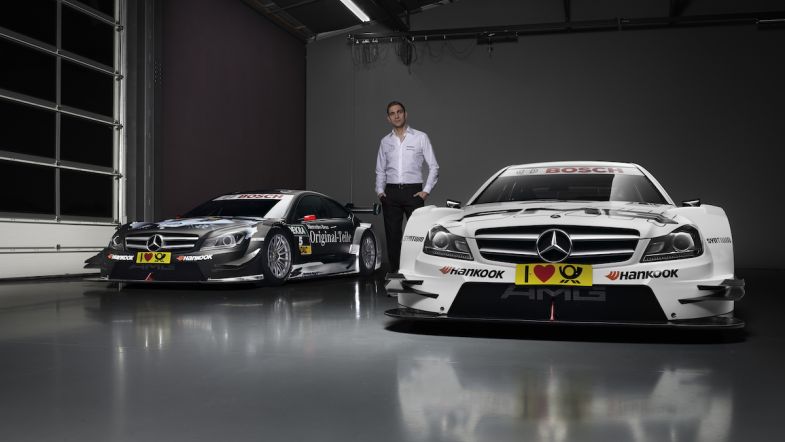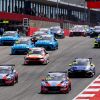Why the DTM and Vitaly Petrov need each other
It comes as no real surprise that Mercedes has signed Vitaly Petrov as part of its 2014 DTM programme.
Since the DTM started making its footprint in Russia, first with the Moscow City Racing event around Red Square in the heart of the Russian capital, and then onto the first ever DTM race at the Moscow Raceway in August last year, it became apparent that there needed to be a Russian driver in the series.
A good place to start this column would be remembering that Russia as we know it is a relatively young country.
During Nikita Khrushchev’s period as Premier of the Soviet Union from 1953 to 1964, the USSR’s motor industry really started to develop, despite having been in existence since 1929. From the Khrushchev period onwards until the USSR collapsed in 1991, a motorsport culture was developed largely around ice-racing and rallying.
The cars, though, were 1.0 litre Ladas with no branding or tuning due to state ownership of businesses. There was no motorsport governing body such as the FIA or the ITR. It was just a few groups of enthusiasts getting together because they loved it. There was no chance for an international career, and the best these drivers could hope for was to race in competitions in the other Soviet Republics.
But all that changed with the fall of the USSR. Russia, as we now know it, is a developing country of vast natural wealth with a fast emerging and educated middle class.
When travelling through the outskirts of a major city like Moscow or St. Petersburg in 2014-spec Russia, the rows of uniform Soviet tower blocks remain as a hangover from the Soviet past. But look outside. Amongst the ubiquitous Ladas, VAZs and Zhigulis, there are an increasing number of BMWs, Audis, Mercedes and other premium branded cars. Go to the centre of these cities, and the number of these cars increases. If you’re anyone in Russia, having a premium brand of car is vital.
This is why Russia needs the DTM, why Mercedes needs Vitaly Petrov, and Vitaly Petrov needs Mercedes.
Despite the emergence of high-end consumer goods in Russia, Formula 1’s designs on the country are too soon. Granted, during the Soviet period there was a small amount of open wheel racing in the Baltic states, but nothing major. Nothing the every day person could associate with.
And this is where the DTM fits the bill of the emerging middle class of the ‘new’ Russia. In order for anything to flourish anywhere, people need something to associate with. Judging by the emerging amount of premium brand cars emerging on Russian roads, Russians will be able to link the DTM with something they have.
The sales figures for Mercedes are also a telling sign of this trend.
In the first quarter of 2011, Mercedes’ sales in Russia were higher than any of its other markets with 7,764 cars being sold per month. The figures for the first half of 2013 were equally as impressive, with – according to data from the Association of European Businesses – sales being up by 20% compared with the first half of 2012.
Following the 2013 statistic, Mercedes’ Executive Vice-President of Sales and Marketing, Dr. Joachim Schmidt commented: “Russia is one of our most important growth markets and will remain so for the next years [and] we’re very satisfied with our development there.”
With cars already selling well, and a DTM race on outskirts of the Russian capital which pulled in 45,000 spectators on its first attempt, putting Petrov in the car is a no brainer. Russian motorsport is already on the up, and having a native driver in a car they can relate to, will make it even stronger.
Don’t, however, think Petrov’s signing is dictated purely by marketing and Mercedes’ desire to tap into its strong Russian market.
If you cast your mind back to Petrov’s 57 Formula 1 starts between 2010 and 2012, he proved he is also a decent racing driver.
Whilst his 2010 debut Formula 1 season was for want of a better description “crash heavy”, this is still the man who kept Fernando Alonso behind him for sixth at the 2010 Abu Dhabi Grand Prix, thus, along with a Ferrari strategy error, was a contributing factor in denying the Spaniard a third F1 drivers’ Title.
Cast your mind forward to 2011, and Petrov took third at the season opening Australian Grand Prix. Whilst the problems with the Lotus Renault’s forward-facing exhaust system had not yet become apparent, Petrov still got there. By the end of the season, despite there being a mid-season driver switch between Nick Heidfeld and Bruno Senna, Petrov rounded off the season tenth.
In 2012, his final Formula 1 season, Petrov replaced Jarno Trulli at Caterham, and finished 19th in the championship, three places ahead of highly rated team-mate, Heikki Kovalainen.
It would be unfair to expect Petrov to set the world alight immediately in the DTM however. He’s had solid, if unspectacular results in Formula 1, but he never got a really good crack at things. With the backing of a full manufacturer, and being paid a wage, the flashes of speed he showed during his time in Formula 1 will be developed along with some needed consistency.
And this is why the Mercedes-Russia-DTM tie-up works. Mercedes will continue their upward trend in sales due to people being able to associate their car with Petrov’s, and whilst there is some way to go in terms of ironing out the problems in Russian motorsport culture – the Vladimir Putin interrupted Q4 at the Moscow Raceway last year, for example – Mercedes putting a Russian driver in a decent racing car in a world class series is certainly a step in the right direction.










